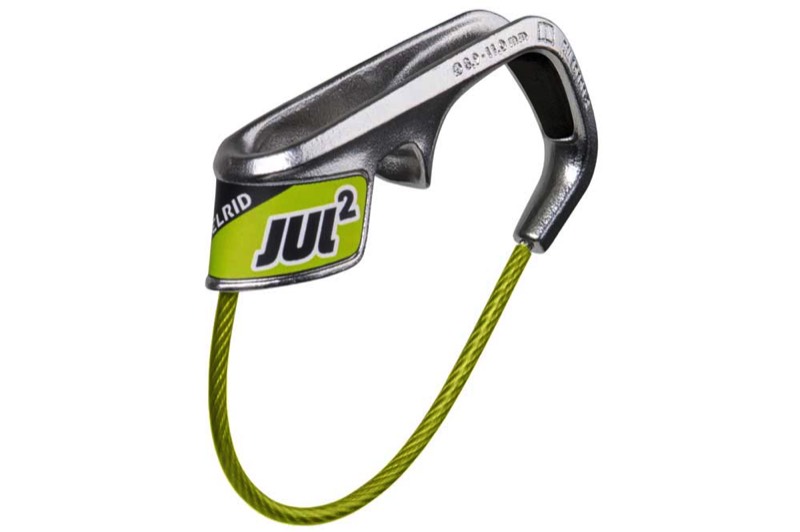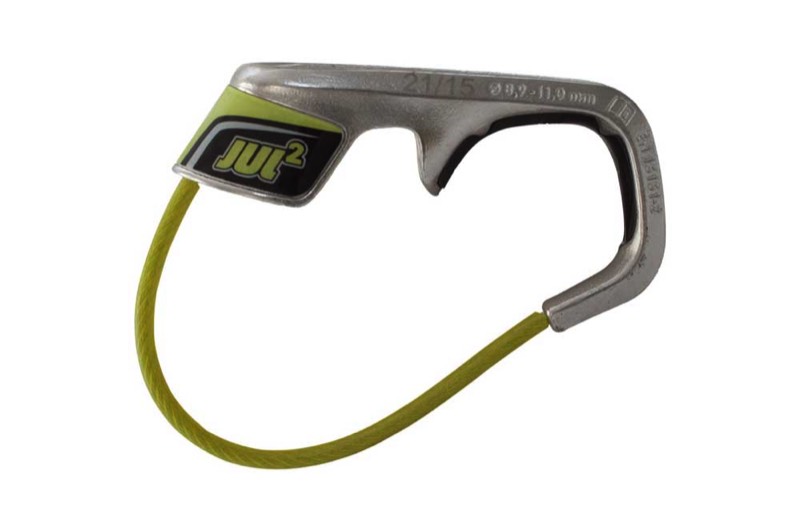Edelrid Jul2 – Perfect For Single Pitch Cragging
With November drawing to a close it was time to admit that I had suspended my disbelief for long enough. The escarpment season was over, and no amount of chemical hand warmers stuffed in my chalk bag, and strategically taped to my forearms was going to change that. It was time to head south, to squeeze a bit more out of 2016 with a quick trip to Kentucky’s Red River Gorge.
The Red is cragging at its best, endless single pitch sandstone walls and tons of permadraws. On most days we used one rope, one belay device, our shoes and harnesses, one locking carabiner, and a lone quickdraw. A fast-and-light mentality is usually associated with alpine climbing, but it makes just as much sense at the crag and especially at the gym. Each day we saw climbers tottering like yaks under their huge packs, later adorning themselves like Christmas trees seemingly unaware of the lightness and simplicity that can make cragging so much fun.
The Red is cragging at its best, endless single pitch sandstone walls and tons of permadraws. On most days we used one rope, one belay device, our shoes and harnesses, one locking carabiner, and a lone quickdraw. A fast-and-light mentality is usually associated with alpine climbing, but it makes just as much sense at the crag and especially at the gym. Each day we saw climbers tottering like yaks under their huge packs, later adorning themselves like Christmas trees seemingly unaware of the lightness and simplicity that can make cragging so much fun.

Edelrid Jul2
The Jul2 from Edelrid marks the latest evolution in a braking assisted design that actually dates way back to 1994 and Wild Country’s SRC, a mere three years after Petzl introduced the Grigri. This simple design is wonderfully light because it eschews a moving cam, and pivots the body of the device to clamp the rope against the carabiner. The belayer manages rope in much the same way they would with a standard tube device with one slight difference: to feed slack quickly or to lower the belayer tilts the device upwards with the thumb of their brake hand while maintaining their grasp on the rope. This motion can also allow for softer catches when the belayer is prevented from jumping or outweighs the climber. The most intuitive and ergonomic way to use the device positions the belayer firmly in control of the brake end. This is design at its best. Eight years after Petzl introduced new guidelines for using the Grigri you’ll still see many belayers abandon the brake strand to feed slack because they simply believe it feeds better that way.
I never got a chance to use the SRC, but do own Mammut’s 2010 update to the design the Smart which is the most similar device on the market to the Jul. With the addition of a thumb hook the Smart addressed the most common complaint; that handling the SRC was uncomfortable and clumsy. In much the same way, the Jul2 is a solid improvement upon the Smart and addresses the concerns I had with ergonomics, and durability. The closed thumb loop on the Jul2 is more comfortable and impossible to pop out of; an issue I frequently encountered when I used the Smart with belay gloves. The Jul2 employs a narrowing channel on its steel body that makes controlling ropes of any diameter (8.9-11mm recommended) easy, and greatly improves durability. If you spend a lot of time at sandy crags you should consider pairing the Jul2, or any tube style belay device for that matter, with a steel carabiner to further improve the durability of your setup. When paired with a steel carabiner the Jul2 is still lighter than other braking assisted devices paired with a lightweight aluminum locker.
I never got a chance to use the SRC, but do own Mammut’s 2010 update to the design the Smart which is the most similar device on the market to the Jul. With the addition of a thumb hook the Smart addressed the most common complaint; that handling the SRC was uncomfortable and clumsy. In much the same way, the Jul2 is a solid improvement upon the Smart and addresses the concerns I had with ergonomics, and durability. The closed thumb loop on the Jul2 is more comfortable and impossible to pop out of; an issue I frequently encountered when I used the Smart with belay gloves. The Jul2 employs a narrowing channel on its steel body that makes controlling ropes of any diameter (8.9-11mm recommended) easy, and greatly improves durability. If you spend a lot of time at sandy crags you should consider pairing the Jul2, or any tube style belay device for that matter, with a steel carabiner to further improve the durability of your setup. When paired with a steel carabiner the Jul2 is still lighter than other braking assisted devices paired with a lightweight aluminum locker.

Edelrid Jul2
During my trip we used the Jul2 on ropes from 9.2mm to 9.8mm. It fed smoothly, caught quickly and reliably, and didn’t creep at all during long projecting burns. My only complaint is that lowering isn’t quite as smooth as I’m used to. It got better over the course of the trip, but I still found it a bit jerky when compared with a Grigri, which leads to the obvious comparison. The Jul2 cannot do everything the Grigri does, belaying from an anchor or rope soloing come to mind. But the Grigri cannot match the functionality of the MegaJul, the Eddy or even the lowly ATC. Each tool has its purpose, and the Jul2 excels at what it is designed for: single pitch climbing. At $35 and only 87g the Jul2 is easy on the wallet and saves about 100g when compared to most other braking assisted devices. Budget conscious climbers can buy up to six quickdraws with the money they would save vs. getting another braking assisted device.
Learn more about the Jul2 at http://www.edelrid.de/en/sports/belay-and-rappel-devices/ or buy it at https://www.mec.ca/en/product/5049-440/Jul2-Belay-Device.

Photo: Dorian Tsai http://www.doriantsai.com/

